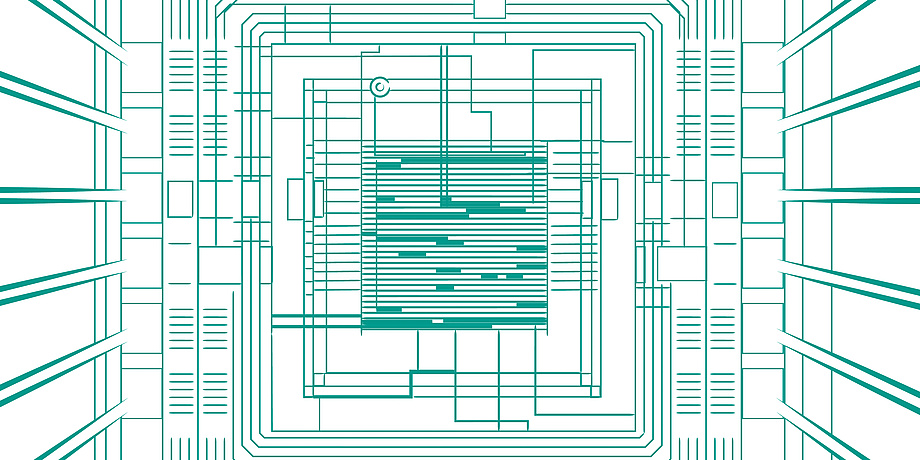It is therefore impossible to imagine our familiar life without electronics-based systems. But, and here researchers are in agreement, they will continue to shape our environment in the future as the basis for many innovative developments.
TU Graz has established itself as an important research partner at the heart of the Austrian electronics industry. This path is being consistently continued with the recent establishment of the Silicon Austria Labs (SAL) headquarters at TU Graz’s Campus Inffeldgasse. Together, the University and the industryoriented research institution also founded the first two academic TU Graz-SAL Research Labs in Austria – where research is conducted on the basics of reliable electronic systems – always with an eagle eye on the needs of industry.
Silicon Austria Labs (SAL for short) is a newly founded Austriawide research initiative conducting research along the entire value chain of electronics-based systems. In association with three universities at the three SAL locations, several SAL research labs will be established in the coming years – the first two were founded in January in association with TU Graz.
At the same time, the new Electronics Based Systems Building – a research and development centre in the field of sensor technology and microelectronics – was opened at TU Graz. Also this spring, the FFG training programme InnoEBS was presented in the field of electronics-based systems, which gives partners from the domestic electronics industry the opportunity to have their personnel trained as certified EBS specialists. TU Graz together with the testing and certification company SGS 2019 have founded a research hub in the form of Cybersecurity Campus Graz, which is dedicated to security in our increasingly networked world.
With the Electronics Based Systems Building, a research and development centre in the field of sensor technology and microelectronics is being created. It is aimed at cooperation projects between science and industry. The overall area of the sevenstory building amounts to 4,600 square metres and comprises laboratories, workshops, offices and seminar rooms. Half of it is available for university spin-offs as well as small and mediumsized businesses in the field of microelectronics. The other half will be used by the Faculty of Electrical and Information Engineering of TU Graz with focus on the research areas of electronics, measurement and sensor systems and highfrequency technology.
In the field of electronics-based systems, TU Graz has focused on both the scientific fundamentals and industrial applications and is part of an interdisciplinary network of international appeal. Silicon Austria Labs is to become the third largest research centre in Austria and an established name in the global research landscape. You could say they share a positively electrifying connection together.
Bernd Deutschmann, Bernhard Aichernig, Marcel Baunach, Alexander Bergmann, Peter Hadley and Wolfgang Bösch are just some of the many researchers working in this field at TU Graz, and they give their take here on what they think electronicsbased systems is, how it will influence our future and what research is currently being carried out at TU Graz.
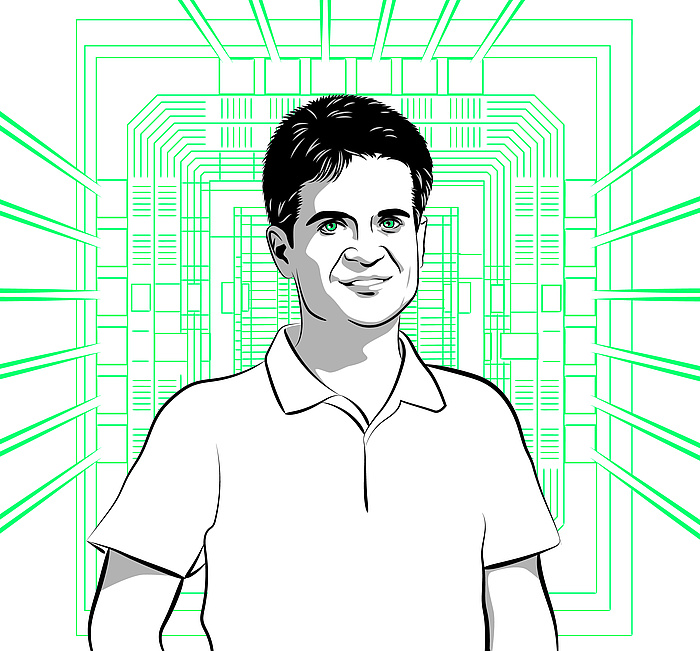
BERND DEUTSCHMANN:
Electronic systems are everywhere today: in mobile phones, computers, planes and cars – there is no technical device that doesn’t contain electronics. Microelectronics will shape the future – it’s the size of a fingernail and can do an amazing range of different things.
“What many people don’t know is that the basic components of many current technologies come from Austria,” says Bernd Deutschmann keenly. “Technologies such as NFC and RFID have their origins in Austrian laboratories and most of the well-known mobile phones have microchips from domestic companies built into them.” Deutschmann is head of the Institute of Electronics at TU Graz and almost literally has electricity in his blood. He set himself the goal of making electrical engineering more popular again among talented young people, because, as he says with certainty: “The future belongs to electronics. There is no technical device today that does not contain electronics.”
And he has only recently taken another step. Together with Bernhard Auinger from SAL, he heads one of two TU Graz-SAL Research Labs at TU Graz, where basic research is to be implemented while keeping a steady eye on the surrounding semiconductor industry. The topic of electromagnetic compatibility has accompanied Deutschmann throughout his research life and will also be the focus of the new research laboratory. “Electronic devices do not work alone. They cause interfering emissions that affect the environment in the same way as the devices themselves are affected by interfering emissions from the environment.” A mobile phone call that interferes with radio reception is a harmless example. More massive interference emissions can cause sensitive devices to work incorrectly or even fail completely. In safety-relevant applications in a vehicle, for example, this minor incompatibility can quickly turn into a massive safety problem. “Years ago, for example, we discovered that mobile phone radiation disables protective mechanisms in cars and thus endangers the occupants.”
The aim of his TU Graz-SAL EMCC and Radio InterOp Lab (EMCC LAB) is to investigate how different electronic systems can coexist safely and how this can be simulated and measured during development. “We would like to develop a digital twin that can detect and eliminate interference problems from the outset.”
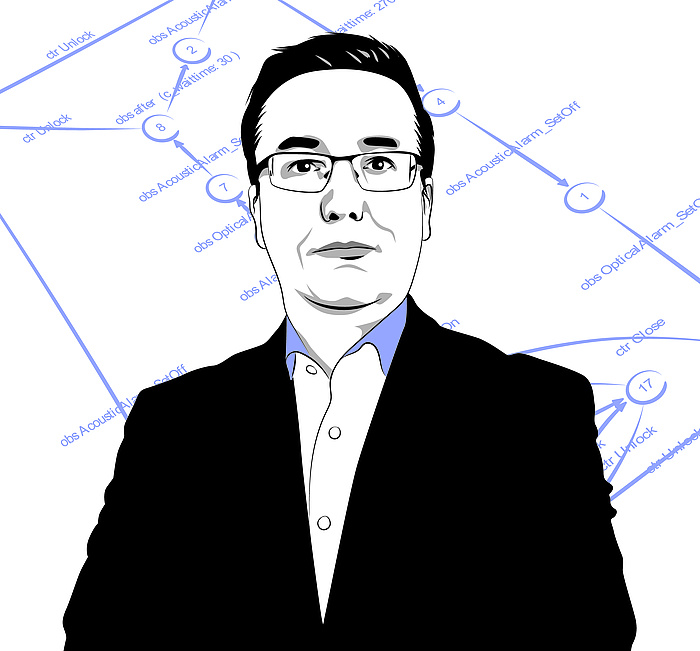
BERNHARD AICHERNIG:
Electronics-based systems are based on hardware components as well as software. Modern systems are characterized by increasing complexity: they are networked and integrate artificial intelligence.
The second TU Graz-SAL Research Lab at TU Graz is concerned with the reliability of embedded systems – i.e. small electronic systems integrated into other objects. The TU Graz-SAL Dependable Embedded Systems Lab (DES LAB) is headed by Bernhard Aichernig, Institute of Software Technology, and Andreas Rechberger of Silicon Austria Labs.
“It is perfectly normal that guarantees are given for the faultless functioning of electronic hardware. However, this is usually not available for the software,” says Aichernig, explaining his research approach. “But that only goes to show that we haven’t gone far enough yet. With our research we want to make it possible that in the future guarantees can also be given for the software.” The scientist and his team are mainly concerned with artificial intelligence and machine learning. The problem is that it is currently impossible to check how an artificial intelligence learns and whether it has understood everything correctly. “Algorithms can be checked – for example, it is possible to prove their correctness. But in the case of an AI in the form of a neural network, you only see the weighted neurons that are linked together – basically just a bunch of numbers that doesn’t say much.” Aichernig and his team therefore also want to systematically test such AIs and generate analysable models from the data obtained. To do this, they also use a form of artificial intelligence. Active learning algorithms interact with the system under test and form an abstract model of the inner behaviour: “You can think of our tests as an oral exam. We interact with the artificial intelligence and ask new questions based on their answers, thus penetrating deep into the system.” The aim is to gain new insights into how intelligent systems learn so that it is possible to automatically check and improve the systems later on.
This approach will now be applied in the TU Graz-SAL Research Lab. It has already been tried out on critical server infrastructure in the TU Graz lead project Dependable Internet of Things. Particularly relevant are data brokers that connect different sensors with each other and handle the data transfer. In autonomous vehicles, for example, this is a system-critical component and must not fail. Doctoral student Andrea Pferscher had “success” with this method: through many but nevertheless valid requests, the connection between critical server and sensor can be broken. The US space agency NASA has already expressed interest in her research.
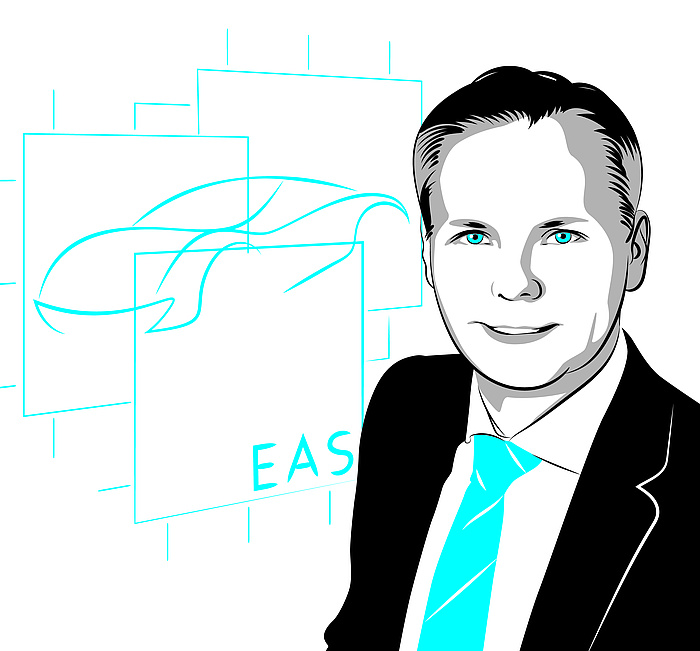
MARCEL CARSTEN BAUNACH:
Electronics-based systems are systems that are becoming more and more powerful or even possible in the first place due to an increasing number of electronic components, such as household appliances, intelligent energy supply networks and autonomous vehicles. Hidden within them are small but powerful computer systems – embedded systems.
“The internet has developed into a kind of super-infrastructure of billions of networked devices, and it is constantly growing,” explains Marcel Baunach from TU Graz’s Institute of Technical Informatics. The development, use and operation of these constantly interacting systems pose ever greater challenges for society and, above all, for research. “Everyday, but also increasingly, critical infrastructure today operates in a wide-area network and is dependent on this network functioning faultlessly at all times and under all circumstances.” Errors or failures can have fatal consequences if they affect the interaction of power plants and distribution networks or of vehicles and transport infrastructure, for example. Marcel Baunach is working on various reliability aspects of embedded systems with his Embedded Automotive Systems group. In the area of safety, people are protected from the effects of faulty systems; but in the area of security it is exactly the other way round and the electronic systems must be protected from illegal access.
However, it is not only important that the system has been reliably developed, but also that it functions reliably over years and decades and can meet changing requirements. “In particular in the area of large, expensive infrastructure – such as in power plants or test benches in the automotive industry – it is important that I can operate, adapt and troubleshoot the systems over the long term. For example, in order to implement new customer requirements or to efficiently adapt the hardware and software of autonomous vehicles to future changes in legislation.” At the same time, reliability must be guaranteed with every change. For example, an airbag in a vehicle must still deploy at the same time after an update. The team led by Baunach is currently working on computer systems whose software and hardware can be changed during operation without interruption. “These are processors that are reprogrammable and operating systems that test new software for guaranteed reliability before an update,” explains the researcher. “The logic in the processor chip can change almost at will and the software adapts to this change.”
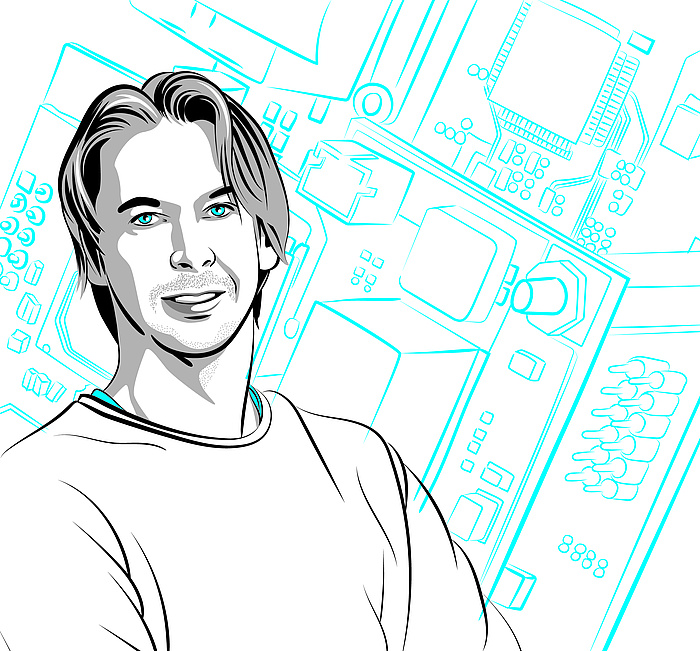
ALEXANDER BERGMANN:
Electronics-based systems start with mobile phones and wearables and end with large test rigs. Nothing can be done today without electronics – electrification has always played a major role in human history.
Alexander Bergmann builds electrical sensor systems that are used in a wide variety of applications. For example, the head of the Institute of Electrical Measurement and Sensor Systems and his team have just developed the world’s smallest particle sensor in cooperation with the ams company. With a size of only 10 x 10 x 3 mm3, it achieves the same performance as fully grown measuring systems and could, for example, be installed in a mobile phone or other small everyday objects. At the same time, the institute has recently developed a sensor that can detect and measure tiny particles in the nanometer range. This is an important step forward in the further development of fine dust measurement systems.
In addition to air quality, sensor technology for autonomous and electric vehicles is an important topic at the institute. In a recently started project, the researchers are working with Infineon on metamaterials that could be used for novel, interference-free sensors. “Conventional sensors work with a magnetic field, which is in turn influenced by the magnetic field of the electric motor and can thus be disturbed,” explains Bergmann. “However, our new sensors work with radar transmitters that change the material properties of metamaterials, thus generating measurement signals that remain unaffected by magnetic fields.”
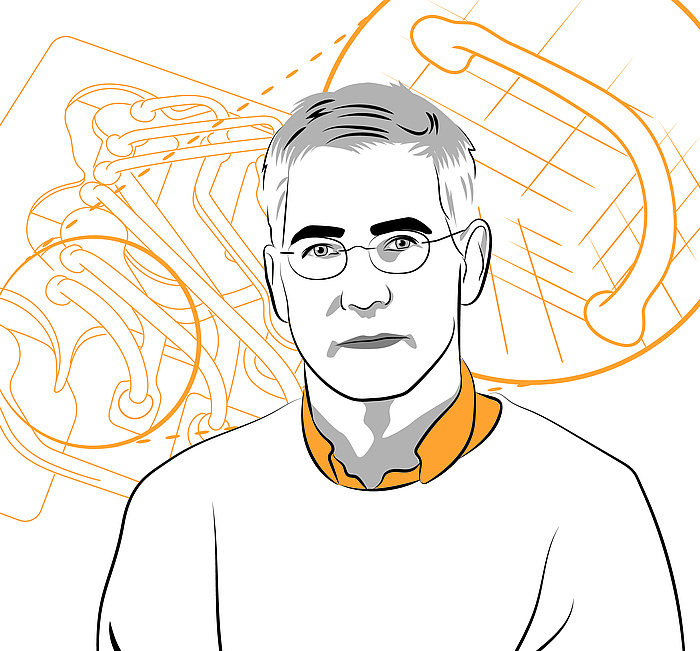
PETER HADLEY:
A large part of the cost of a circuit today is often due to the packaging. We are working on making them more reliable and heat-resistant.
Peter Hadley and the team at the Institute of Solid State Physics are doing research on the very basis. They work on the materials side, dealing with the properties and improvement of materials that are then used in electronics. “We’re interested in the electronic and mechanical properties of a material,” he explains. At the moment, the interaction between packaging and transistor is a central topic. “Modern microprocessor chips contain about one billion transistors and cost about 100 euros – so one transistor costs about ten microcents. For chips with fewer than 100,000 transistors, most of the costs today are due to packaging.”
A circuit often contains a silicon chip which is glued onto a glass-fibre reinforced epoxy substrate. The circuit in the silicon is connected to the metal terminals that protrude from the housing with thin metal bonding wires. An epoxy compound is poured over this. Part of the manufacturing process has to take place at high temperatures. If two materials are joined at elevated temperatures, the interface will warp during cooling due to the different coefficients of thermal expansion, and stresses will occur. If the appliance is then switched on, it becomes hot again – and cools down when it is switched off. Thus the interface between the materials is repeatedly bent, which can lead to cracks and delamination. “Doctoral students at our institute are working intensively with Infineon and ams to improve the reliability of interconnection technology,” says Hadley.
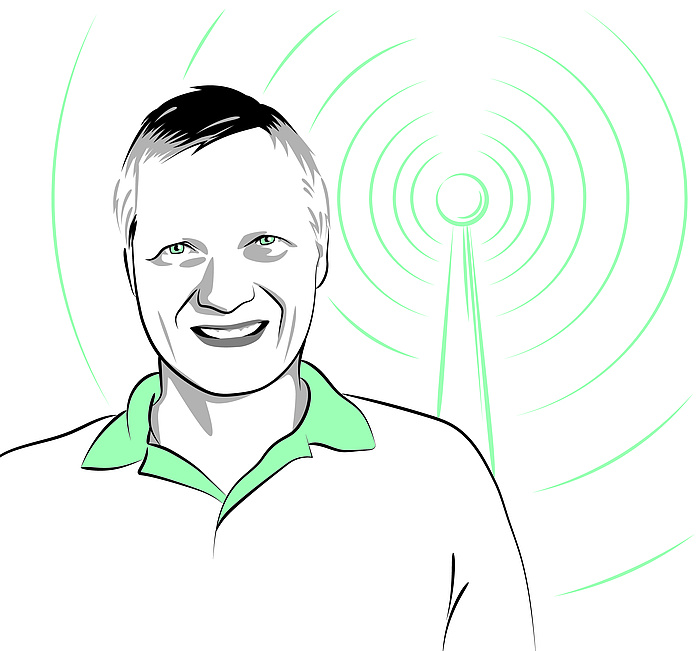
WOLFGANG BÖSCH:
Only their smart interaction turns individual electronic assemblies into a functioning electronic system.
Wolfgang Bösch and the Institute of Microwave and Photonic Engineering, which he heads, deal with wireless communication and wireless sensor systems. “Today we live in the age of networking,” he describes. “First, we linked up individual cities, then households via telephone, then individuals via mobile phone, and today we are working on linking more and more objects together.” This requires increasingly reliable and powerful wireless communication. One research trend is therefore to move to higher frequencies. Higher frequencies allow not only increased data security but also a higher data transmission rate. “To do this, you need cost-effective and efficient electronic components, antennas and filters,” says Bösch. The more systems communicate with each other via different radios, the more important it is to distinguish the useful signals from interference. “Of course, multifunctionality, miniaturisation and above all energy-efficient operation is also a major issue for us.”
However, Bösch is not only a researcher himself, but as Dean of the Faculty of Electrical and Information Engineering, he has a particularly good overview of electronics-related research at TU Graz. In addition to the areas of research described above, he is also interested in several other areas of electronics-based systems. Energy technology turns our cities, homes and supply systems into intelligent smart cities, smart homes and smart grids. On the research side, the Institute of Electrical Power Systems and the Institute of High Voltage Engineering and System Performance are particularly involved in this. Power electronics is also central, and the Electric Drives and Machines Institute under Annette Mütze is concerned with this. And, of course, the basic research in electrical engineering at the Institute of Fundamentals and Theory in Electrical Engineering and the comprehensive research activities of the Institute of Automation and Control, which organizes the smooth interaction within electronics-based systems.
“You can see from this diversity that an electronic system never consists only of isolated components,” summarizes Wolfgang Bösch. “It always requires a coordinated interaction of all electronic components. And you can see this in our research: we work in an interdisciplinary manner, across institutes and faculties. Only when all components work together do they together represent a functioning electronics-based system.” And there is basically nothing more to add to this.
